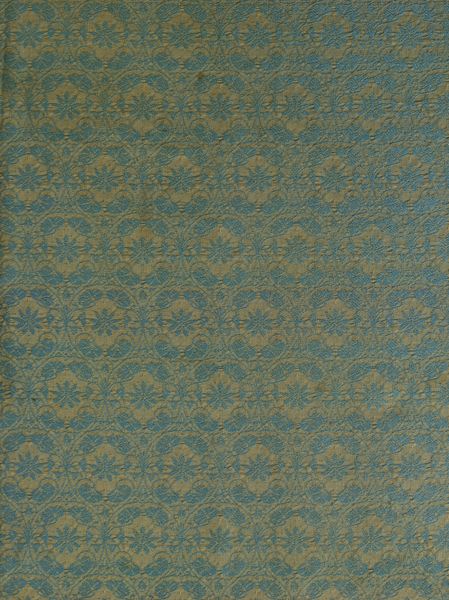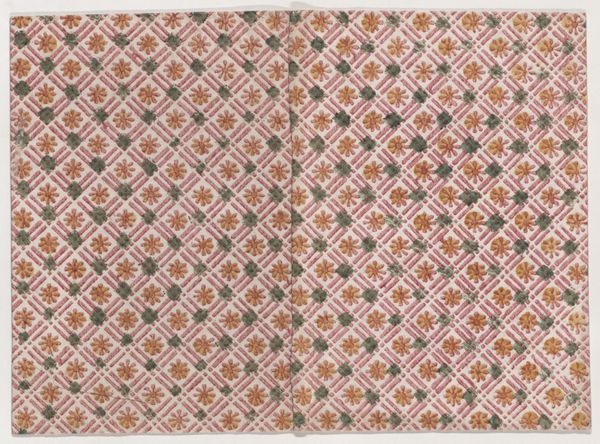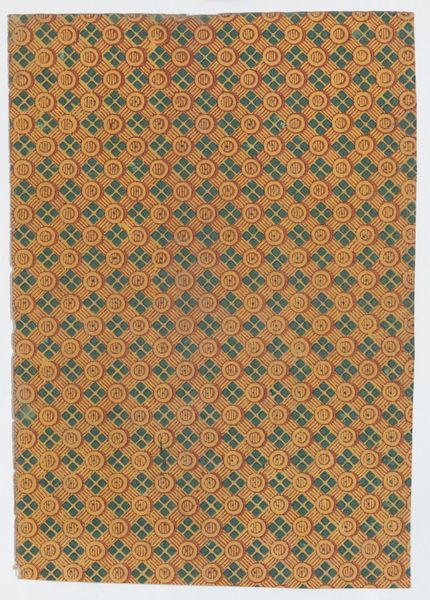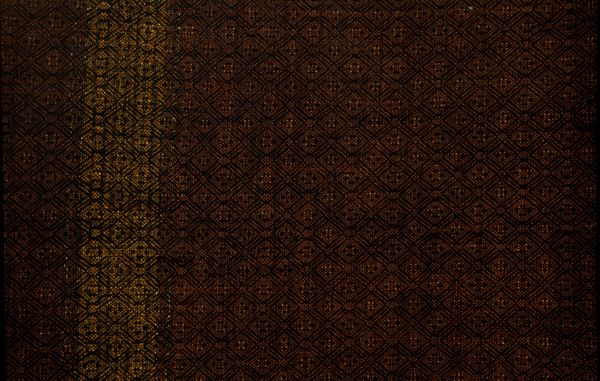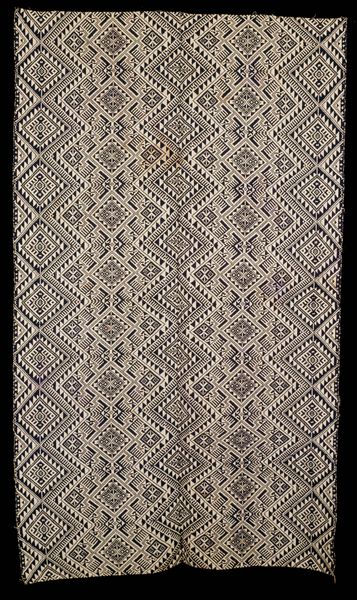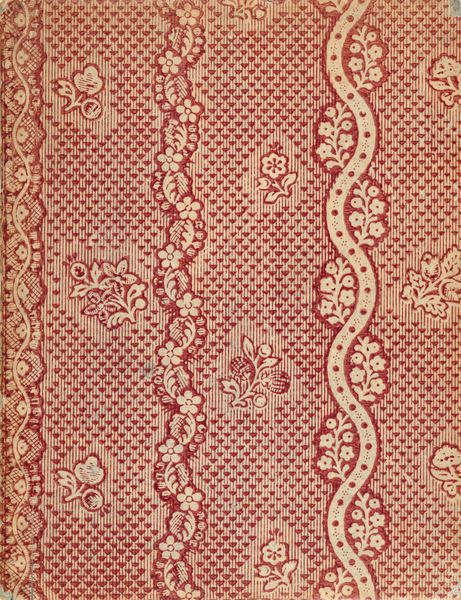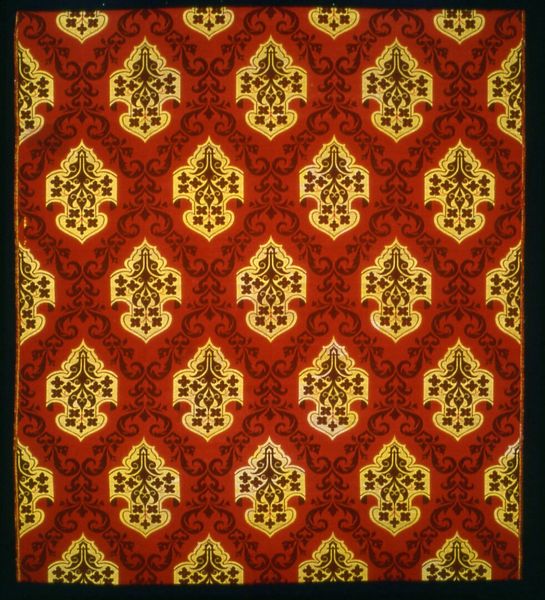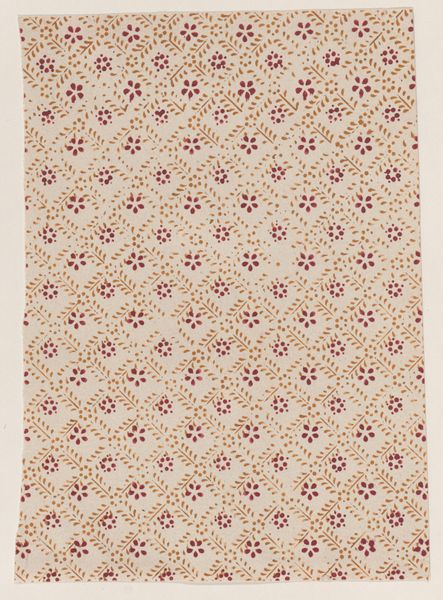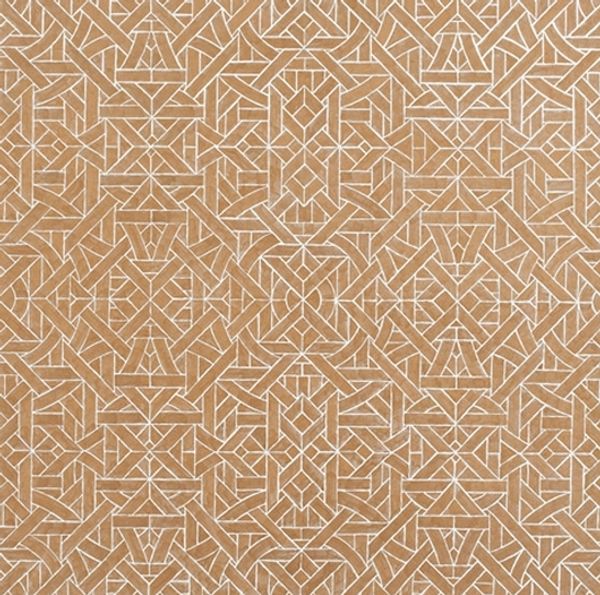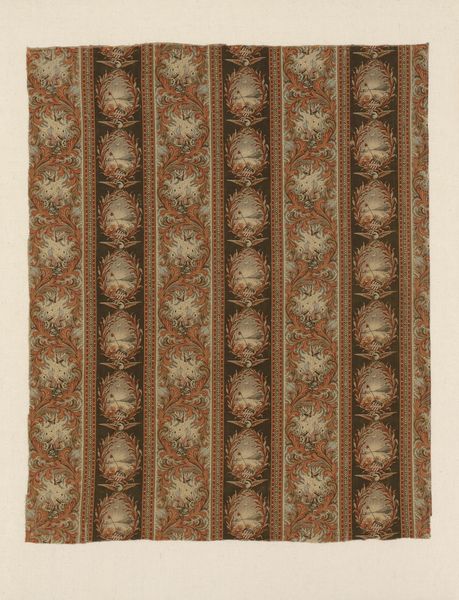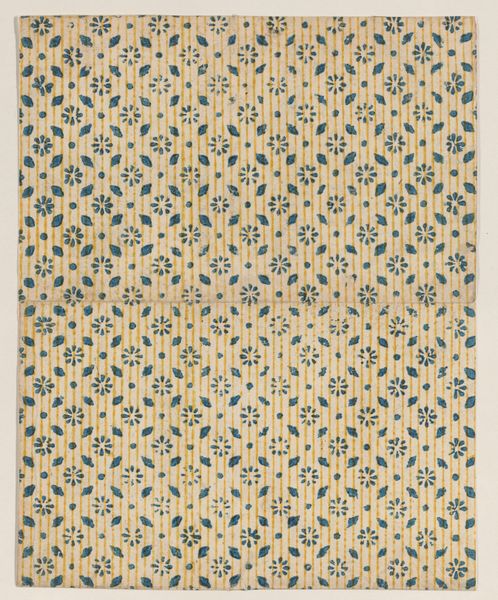
silk, weaving, textile
#
natural stone pattern
#
silk
#
weaving
#
textile
#
geometric pattern
#
pattern design
#
repetitive shape and pattern
#
geometric
#
repetition of pattern
#
vertical pattern
#
pattern repetition
#
textile design
#
layered pattern
#
combined pattern
Dimensions: 195 x 47 in. (495.3 x 119.38 cm)
Copyright: Public Domain
Editor: This is a Sari, a woven silk textile from around the mid-20th century, housed here at the Minneapolis Institute of Art. I’m immediately struck by the intricacy and repetition of its geometric and floral patterns. What stands out to you? Curator: The continuous, unbroken nature of the patterns speaks volumes. It’s more than just decoration; it evokes a sense of ritual, tradition, and cultural memory. We have symbolic layering of geometric and floral forms in golden tones. What feelings does it conjure for you? Editor: Calmness, almost. The symmetry is soothing, like gazing at a mandala. Are those floral shapes symbolic? Curator: Quite possibly. Flowers often represent prosperity, beauty, and the transient nature of life. In many South Asian cultures, they hold deep spiritual significance, appearing in religious ceremonies, celebrations, and everyday life. How do you interpret the overall impact of that golden shimmer against the dark background? Editor: It gives a feeling of both groundedness, but also aspiration, as though it is striving towards the light. It could also be about preciousness, considering gold’s cultural associations? Curator: Precisely! It's about more than just visual appeal. Gold frequently embodies divinity, enlightenment, and power across various cultures. When applied to a sari, an article of clothing deeply connected to identity and tradition, what does that visual statement suggest to you about the woman who would wear this? Editor: I never thought about it that way before, but it’s like adorning oneself with emblems of spiritual strength and cultural identity. It is wearable art in a sense. Curator: Absolutely. Each element, from the choice of silk to the repetition of patterns, weaves a story far richer than what first meets the eye, speaking volumes about culture. Editor: This has changed how I view textiles – it's not just cloth but a narrative woven with intention and meaning. Thanks so much.
Comments
No comments
Be the first to comment and join the conversation on the ultimate creative platform.
